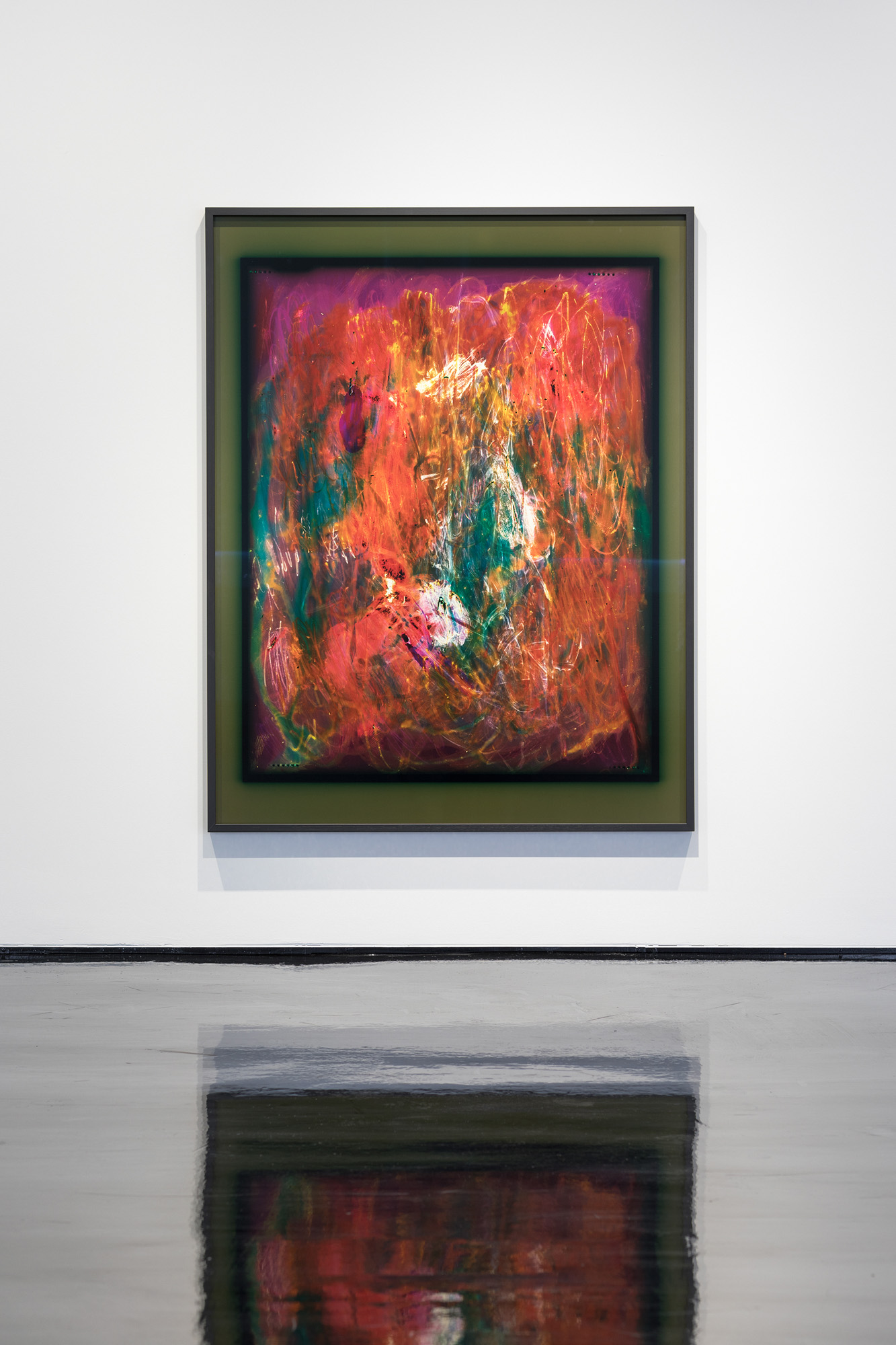Exhibitions
September
Counterculture
GALLERY 2
Counterculture comprises small- and medium-scale works which derive their imagery from subjects of longstanding interest to Johnson, including blues music, Tibetan Buddhism and UFOs.
“The idea of a ‘counterculture’ was something I grew up with,” says Johnson, who was born in Sydney in 1947 and gravitated towards conceptual concerns early on as an artist.
“It was about standing outside the existing system and creating a new culture that was empathetic, peaceful and creative.
“As it turns out, many of the things I make art about are like this – alternative, non-Eurocentric, initially ‘underground’ or obscure but eventually widespread.”
Johnson’s knowledge of, and affection for, early Blues is apparent in a grid depicting 25 legends of the genre, each delicately painted on a 10 x 10cm canvas.
Included are such foundational figures as Leadbelly, Ma Rainey, Blind Lemon Jefferson, Robert Johnson, Memphis Minnie, Lonnie Johnson and Sister Rosetta Tharpe.
While most of the squares are monochrome, colour has crept into several portraits, including those of Janis Joplin and Jimi Hendrix, reflecting advances from black-and-white to colour film in the photographic source imagery Johnson has utilised.
Along with Punk Rock, Blues has been Johnson’s music mainstay for decades and he often listens to it while painting.
“Robert Johnson influenced rock’n’roll and Lonnie Johnson influenced jazz,” he explains. “The blues was appropriated by a white audience as a way of inventing rock’n’roll, especially through Leadbelly. George Harrison once said: ‘No Leadbelly, no rock’n’roll.’”
Just as musicians riff off one another, so do artists, and collaboration has long been a part of Johnson’s practice. Included in the show are paintings co-authored with Daniel Bogunovic, a self-taught artist from Los Angeles with whom Johnson has been collaborating for 15 years.
Yamantaka 2022 depicts a Buddhist protector deity. It was created using the pair’s paint-and-post method, whereby Bogunovic sends Johnson a canvas on which he’s painted a Buddhist figure in the middle and Johnson responds accordingly.
“I’ve been studying and practising Tibetan Buddhism for more than 30 years, and it’s become an interesting contribution to my art,” says Johnson.
“I like the idea of painting as an abstract-expressionist activity but with figurative or recognisable imagery,” he says. “I’m using more colour than usual and brightening everything up. I’m also trying to paint straight from the heart a bit more, without research or planning, but rather finding something inside myself.”
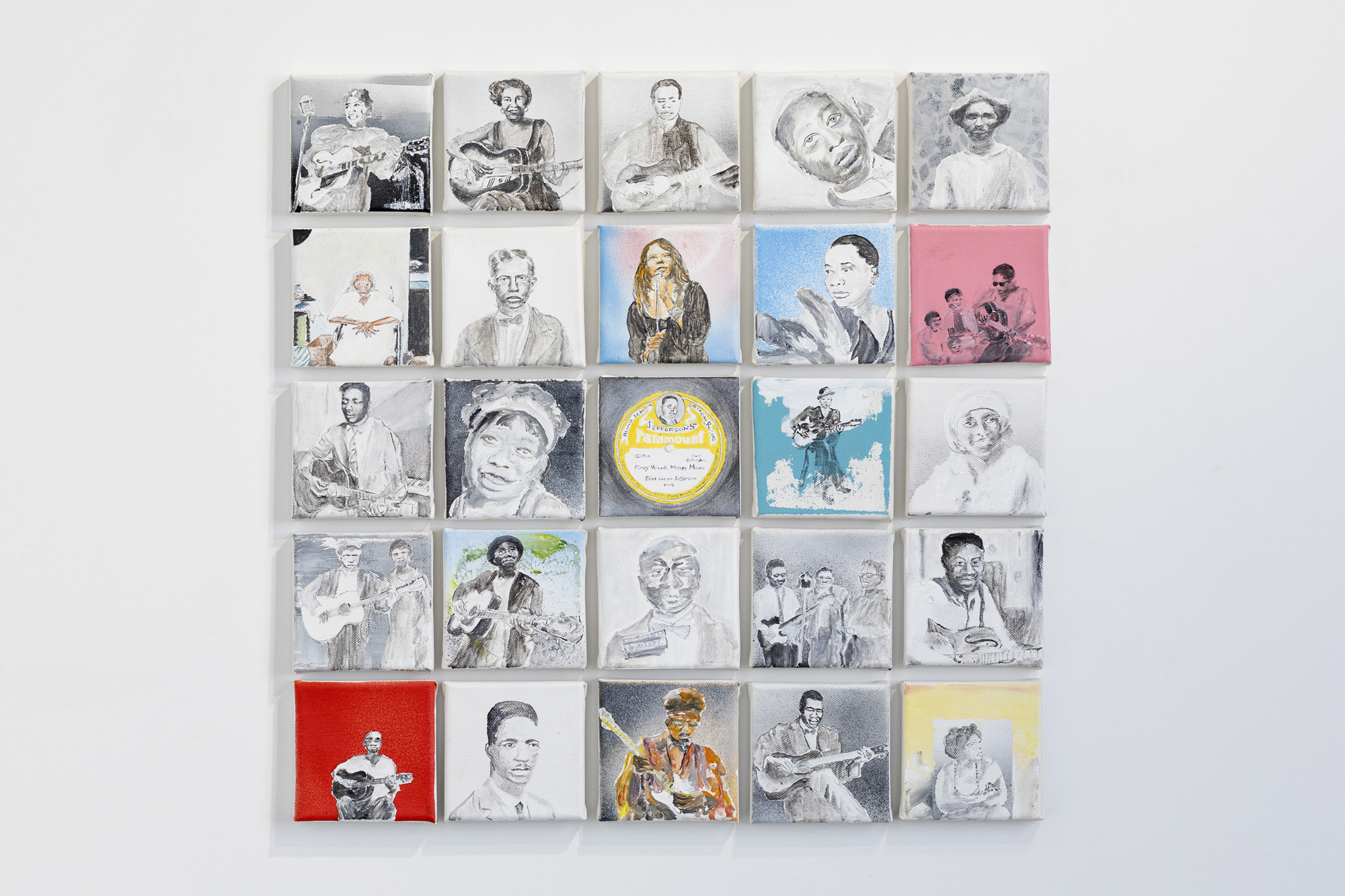
September
Eye-blink Smile
GALLERY 1
Following on from her large-scale installation, A Miracle Constantly Repeated, staged at Flinders Street Station for Melbourne’s 2022 Rising Festival, this intriguing exhibition explores the concept of communication between different species.
When Piccinini and her family took in a rescue cat during COVID, she learnt that the cat’s slow blink was his way of smiling and signalling trust.
Known for her daring and inventive use of different media – from the hot air balloons of her two Skywhales to the high heat of glassblowing – Patricia Piccinini attempts to capture ‘the intrinsic optimism’ of the idea ‘that we don’t need to be the same in order to share the world together, we just need a small moment of shared understanding: an eye-blink smile.’
At the heart of Eye-blink Smile is a new collection of glass sculptures.
“Hand-blown glass is almost a perfect metaphor for my conceptual interests”, says Piccinini.
“These are luminously colourful objects produced by the interplay of terrific heat and human breath, constrained in this case by a constantly changing steel mould. The works capture a moment when these elemental forces are guided by human actions in a way that is more about cooperation than control.
Like most of my work, they try to reconcile and blend oppositions; their visual lightness contrasting with their physical weight, their simple abstract colourfulness contrasting with the extraordinary skill of their creation. They are bubbles made of molten sand.”Having worked with Patricia on the glass sculptures, Aimee Frodsham, Artistic Director of Canberra Glassworks says:
“Patricia brings a new and exciting energy to our studio. She approaches glass making in a way that celebrates traditional techniques with forms and ideas that are truly hers. Over the last few years I have loved the way she has built a collaborative relationship with artist and glass blower Annette Blair. Patricia and Annette have nurtured this creative partnership, resulting in works that reflect their shared care, skill, and passion.”
Everything connects in Eye-blink Smile — a dazzling exhibition composed of iridescent shapes and colours, reminding us to consider our connection to materials and to remain curious in our experience of the world.
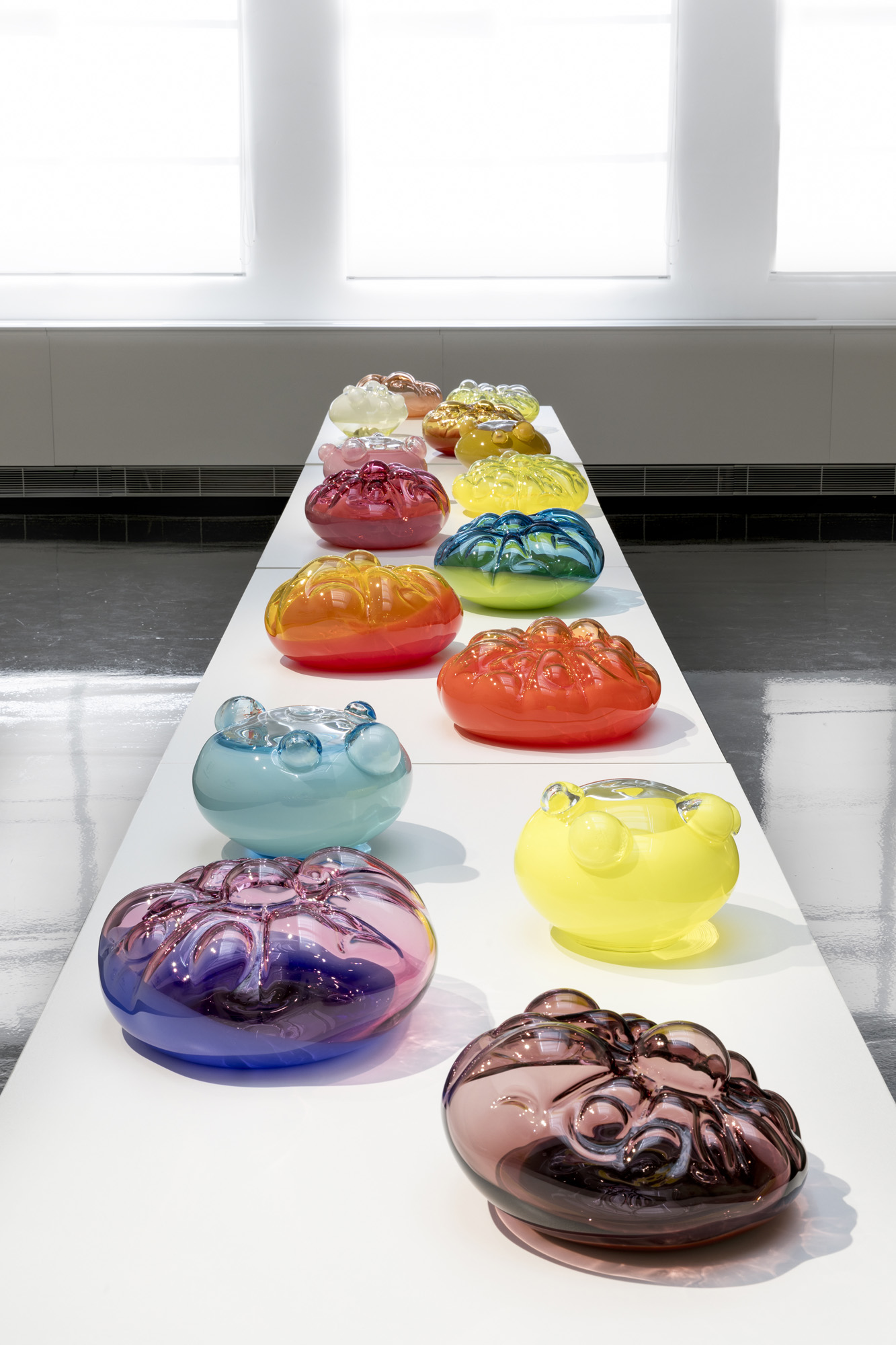

August
New Works On Paper
GALLERY 2
Displayed in Gallery 2, the group of 10 works depict a variety of motifs representative of Karritpul’s traditional lifestyle in Nauiyu/Daly River in the Northern Territory, three hours’ drive south of Darwin.
Intricate in their detail, the subjects include fishnets, fish traps, fishing baskets and dilly bags, as well as mermaids and pig-nosed turtles.
Made with Texta and acrylic, with several on a screen- or lino-printed base, the works include one of a long fish trap that is more than 220cm in height.
Together they reveal Karritpul’s continuing interest in both the form and texture of these culturally significant woven objects, which he delineates with authority and precision.
The works follow on from Karritpul’s earlier exhibition in May as part of NGV Melbourne Design Week, Texere: New Woven Surfaces on Fabric, encompassing 11 unique printed textiles.
Kieren Karritpul won the inaugural Youth Award at the 31st Telstra National Aboriginal and Torres Strait Islander Art Awards in 2014 for his textile work ‘Yerrgi’, which depicts bundles of prepared and dyed yerrgi (pandanus) ready for weaving.
In 2020, Karritpul was awarded Textile Artist of the Year at the inaugural National Indigenous Fashion Awards presented by the Darwin Aboriginal Art Fair Foundation, which led to collaborations with Country Road Homewares in 2021 and 2023.
Karritpul was a finalist in this year’s Sulman Prize at the Art Gallery of New South Wales.
Image: Kieren Karritpul Long Fish Trap 2023, Texta and acrylic on paper, 226 x 65.5 x 6 cm (framed)
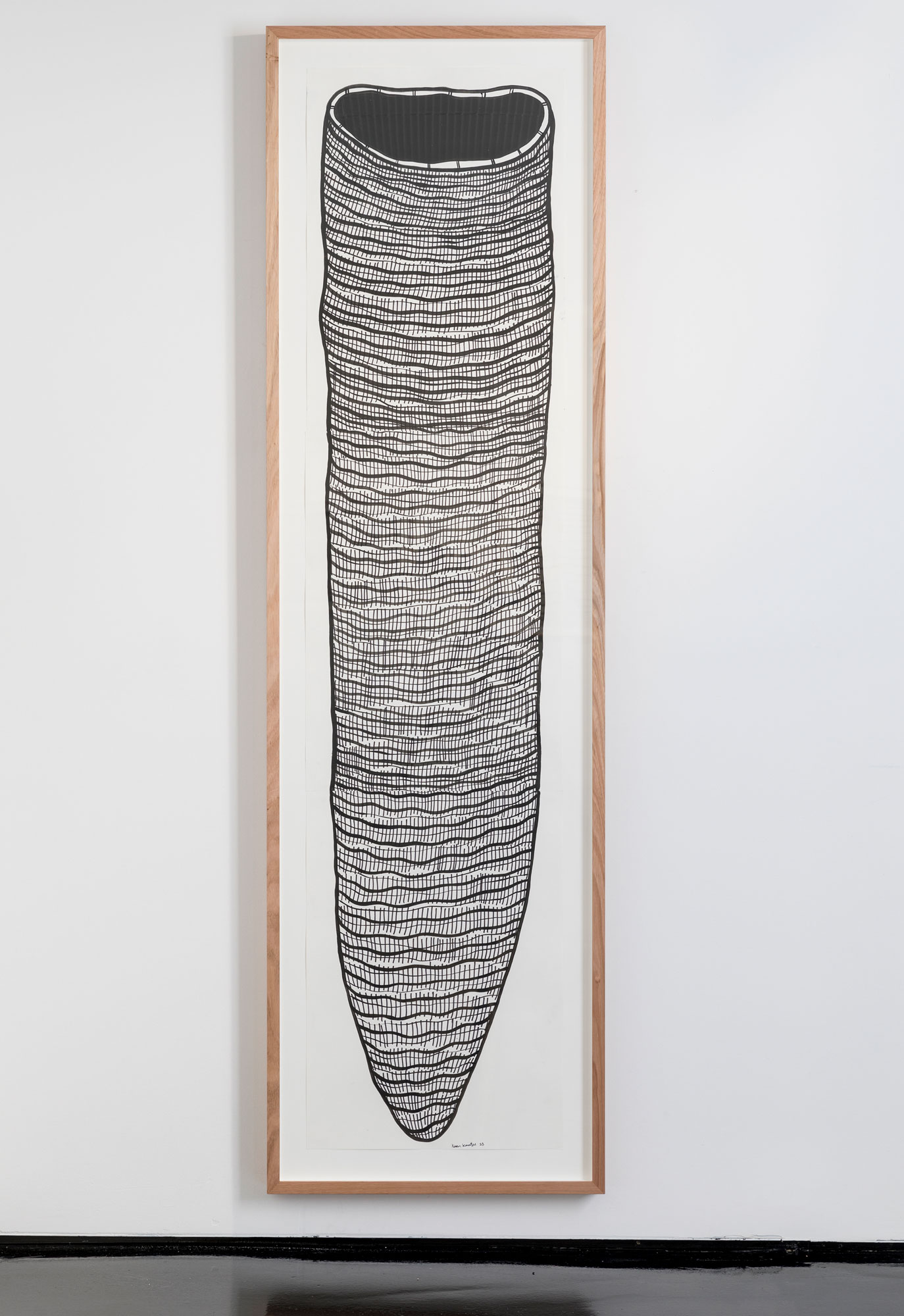
August
True to Life
GALLERY 1
Huntley is a tactile, process-driven artist, always drawing on a well of intuition. The act of artistic creation is a birth of sorts, and the motif of chrysalis that drives this body of work was conceived in the months after the birth of Huntley’s first child. This was followed by a time of nesting, and also of isolation, during the COVID-19 lockdowns. Huntley was interested in the idea of ‘awe-deprivation’ – the traps of solipsistic thought that can afflict people who are estranged from nature. To find yourself in a cloud on a mountain, to study a butterfly in a field, is humbling and awe-inspiring – it broadens the psychic perspective and reminds us that we are entangled in the flow and patterns of nature. Huntley’s gift is his intuitive wielding of materials to marry content with form; to transform the earthly, primordial medium of clay into something airborne and free. Being present and porous to the radiant joy of nature is a remedy. Materialising this wonder into being is an exercise at the heart of the notion of creation.
Huntley’s gift is his intuitive wielding of materials to marry content with form;
to transform the earthly, primordial medium of clay into something airborne and free.
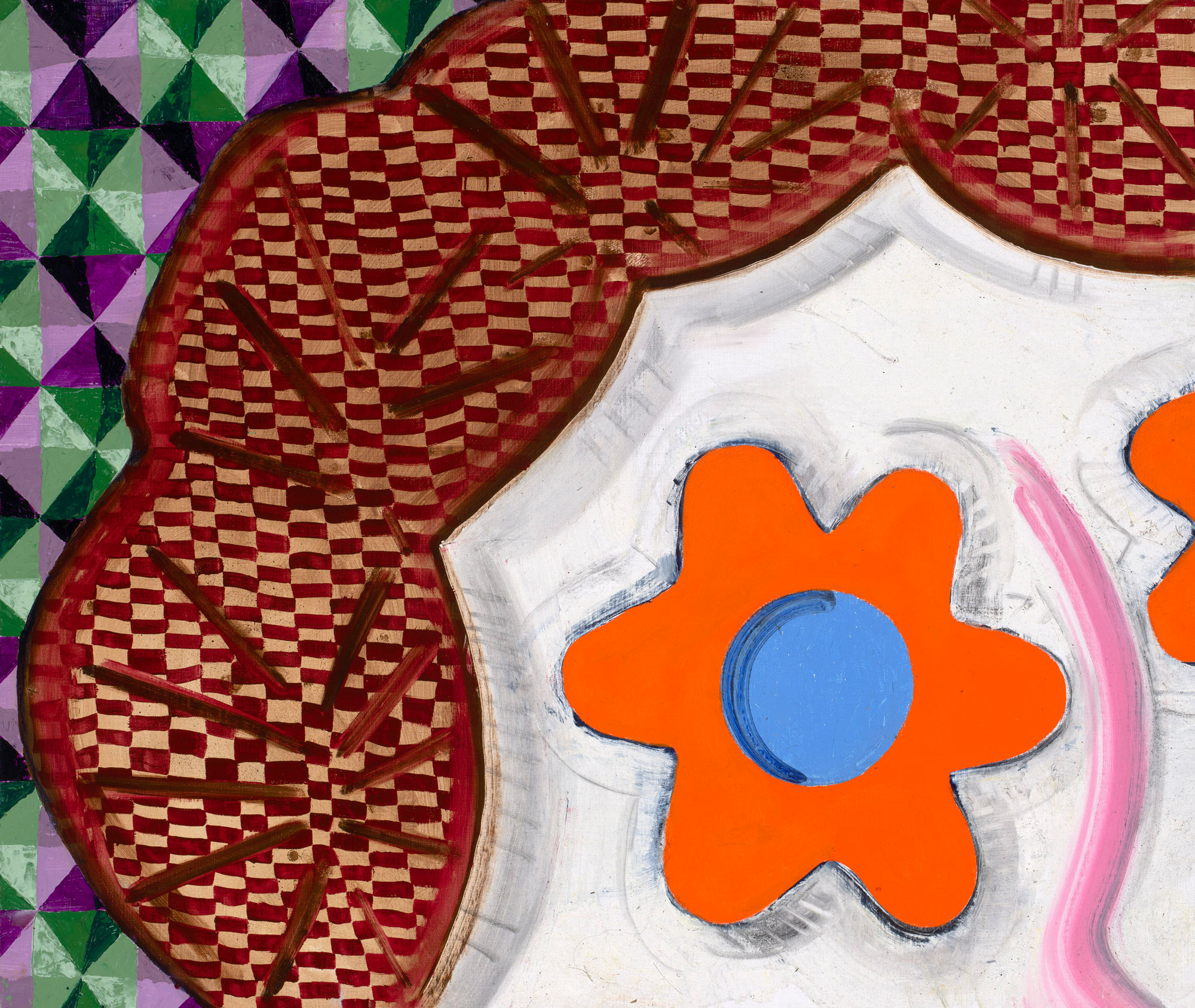
May
Texere: New Woven Surfaces on Fabric
GALLERY 1
A new design collection for Melbourne Design Week by KIEREN KARRITPUL
The designs form an overall story of going out into the bush hunting for our food. For example, we use fishnets in waterways to catch fish, prawns and turtles. When we go out, I am reconnecting with the past and the ancestors – doing what they did, walking where they walked.
Kieren Karritpul, 2023
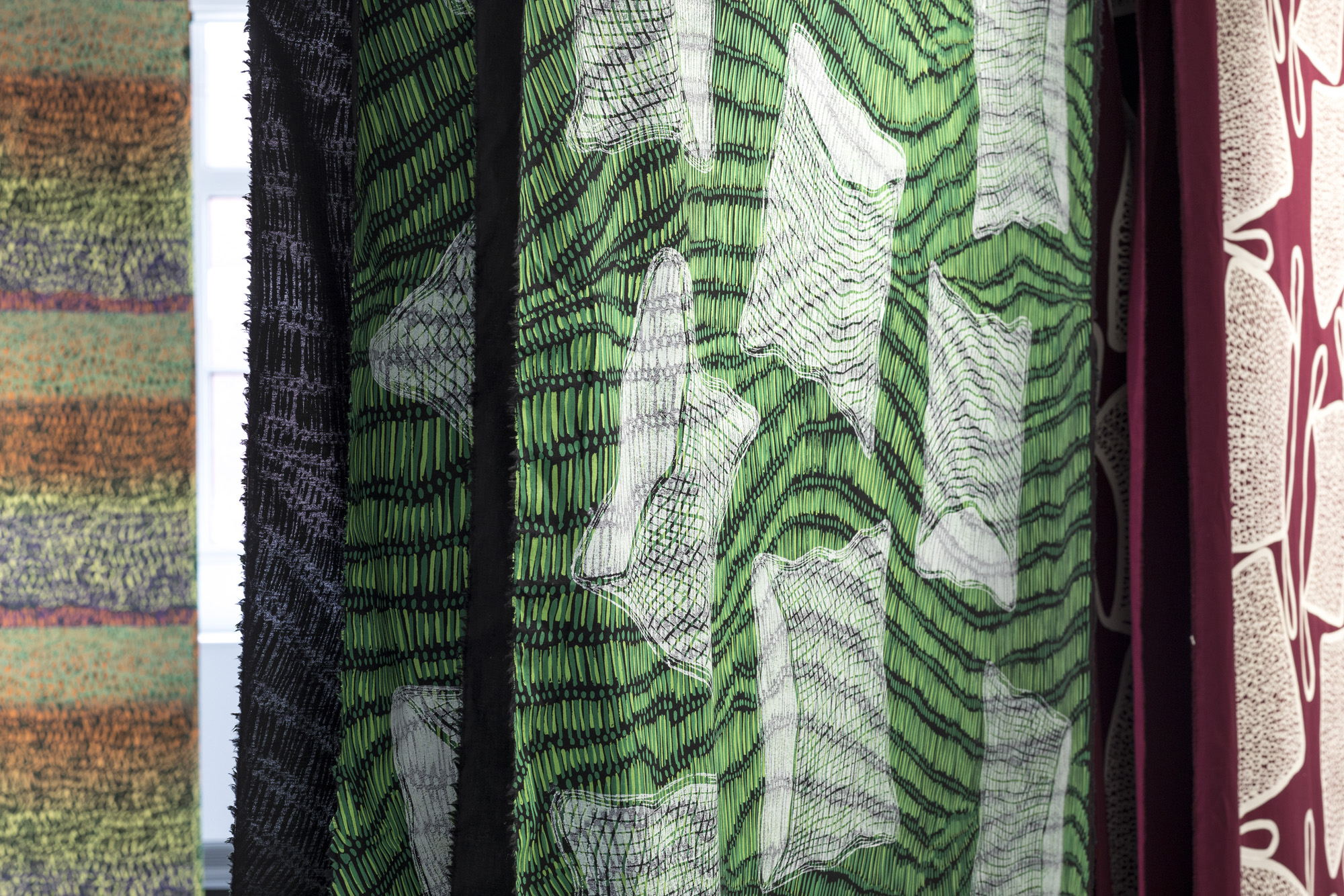
May
Florescence
GALLERY 2
A new design collection for Melbourne Design Week by A&A.
A&A is an ongoing collaboration between Sydney-based industrial designer Adam Goodrum and French straw-marquetry artisan Arthur Seigneur, who now lives and works in Melbourne.
On display in Gallery 2, the suite of three pods and one table is inspired by the process or period of a plant’s flowering, known as florescence.
Each pod is composed of three intersecting sphericons – a sphericon being a ‘paradoxical solid’ made from the combination of four half-cones. This shape-shifting form embodies the changes that occur when a flower opens or becomes sexually functional, known as anthesis.
Viewed from above, the pod is a perfect equilateral triangle. From the front, converging circular edges. And from the side, dimensionally spliced sphericons.
The transformational effect is amplified by the luminosity of the straw marquetry’s bloom-like geometric pattern, which mimics a flower’s sequential colour changes during anthesis.
Each pod has a removable lid and comes in a different colourway – red, yellow, blue.
Complementing these unorthodox shapes is the hemispheric ‘Lotus table’ with a flat top, similarly resplendent in an all-over geometric pattern of pink, red, purple, blue and black. The table echoes the lotus-flower design of A&A’s ‘Bloom cabinet’, now in the collection of the National Gallery of Victoria.
Eschewing editions in favour of highly collectible unique works, A&A were awarded Furniture Design of the Year at the 2022 Dezeen Awards and were finalists in 2020.
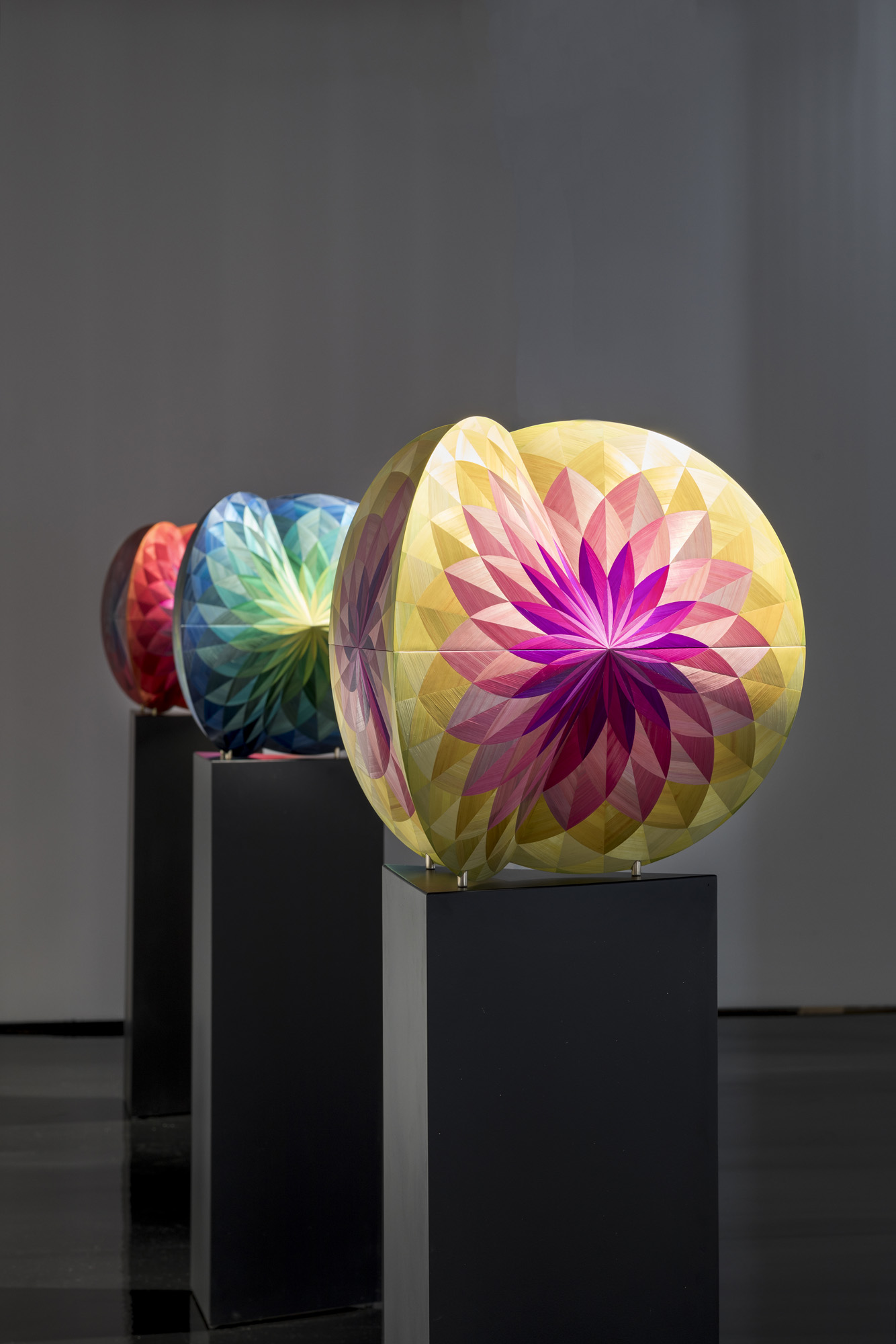
April
Gorgeous
GALLERY 1
Embedded in feminism and material culture, Hannah Gartside (born 1987, London, UK; currently based in Naarm/Melbourne) works across sculpture, installation and video.
Reimagining vintage and found textiles to create installations, sculptures and costumes, her skills of dress-making, patchwork quilting and fabric dyeing accrued during her former career as a theatre costumier at Queensland Ballet are elevated to the conceptually rigorous. Both deeply personal and fiercely communal, Gartside’s sensual and poetic works engage fundamental experiences and emotions of our human condition: longing, tenderness, connection, desire and wonderment.
Gorgeous
I am fascinated with the potential connection between a viewer and an artwork. What could we ask of viewers beyond their attention, and as artists, what can we offer? What is possible when both artwork and viewer have skin in the game?
In this group of works (which I think of collectively under the name Gorgeous), I want to share the pleasure and delight that I feel in making art and in art being a form of communication and connection. I think of my art practice as a lover, one that is consistent, generous, surprising and true. So, in part this is a show of gratitude for this relationship.
These works consider the physical gallery space as an abstracted version of a lover’s body. The sculpture Wall Kisser is hand-cranked by the viewer. On turning the handle the wall receives the repetitive, kiss-thud, kiss-thud of the velvet hearts. The lamp light here is a way-finder, illuminating a rendezvous. The name for this imaginary place is ‘Gorgeous’. It’s spelt out in fabric, thread and paint, the font enlarged from a 1970s coat label.
Hannah Gartside 2023
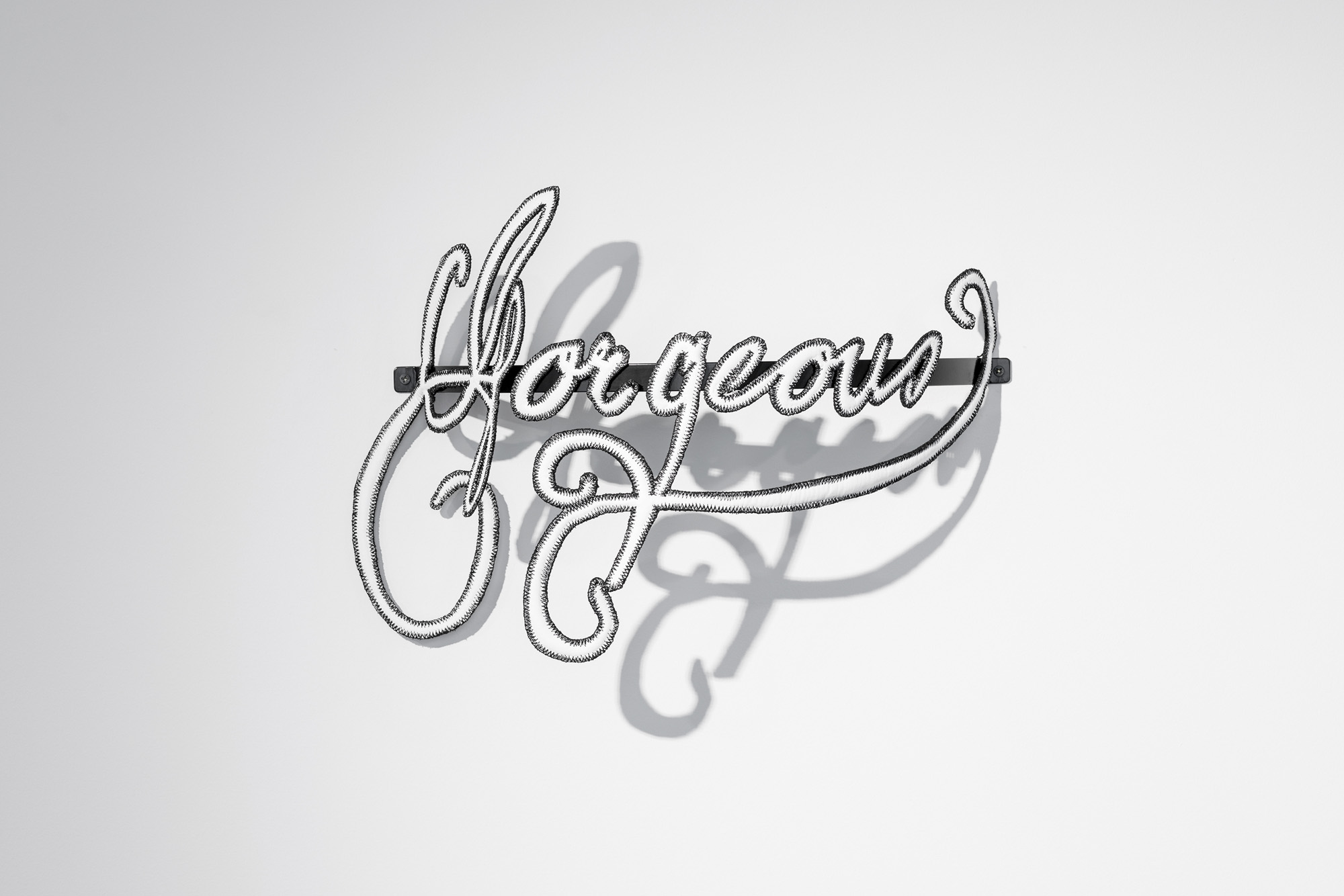
April
Night Horse
GALLERY 1
Night Horse examines the powerful currents between horses as they negotiate consent and desire during mating season. The viewer is drawn inside the kinetic swirl of the herd where hooves, flicking tails, and outstretched limbs offer an intimate encounter across the species divide. Shot in the heat of a February summer’s night, on the artist’s birthday, the charged atmosphere is palpable. Modern equine reproduction is now often a supervised insemination process, or between a mare and stallion who are performing on cue. Night Horse captures a rarely seen ritualised courtship, where the protagonists experience heightened states of being ‘for themselves’.
Gebhardt says, “The images are raw, showing the mess of body fluids and muscle, giving vivid dimensions to the physical language of the body as an archive of story, to suggest a dramatic arc in horse terms.”
The image titles – Midnight, Fetlock, Halo, Parallax, Zenith, Umbra – evoke the night, the horse, or the universe, interweaving the anatomical with the universal, the body with the stars. In observing these complex dynamics, Night Horsechallenges the dominant anthropocentric view, capturing the undeniable force of non-human narratives.
Night Horse (2019) continues themes explored in Gebhardt’s recent video installations Lovers (2018) and Evanescence(2018), both selected for the 2018 Adelaide Biennial of Australian Art, and There Are No Others (2016) presented at Gertrude Contemporary, Melbourne. They thread a trajectory of connected ideas concerning nakedness as the barest form of identity, deep time cycles of matter – life, death, decay.
In 2022 Gebhardt was winner of the William and Winifred Bowness Photography Prize, Monash Gallery of Australia, VIC and a finalist in both the National Photography Prize, Murray Albury Museum of Art, NSW and the Josephine Ulrick and Win Schubert Photography Award, HOTA, QLD. Gebhardt was the recipient of the inaugural Adelaide Studios Artist Residency 2019, presented by the South Australian Film Corporation. The resulting moving image work, Small acts of resistancepremiered at Samstag Museum of Art and the Adelaide Film Festival 2020. Gebhardt’s video installations Lovers and Evanescence, were both selected for the 2018 Adelaide Biennial of Australian Art, and There Are No Others 2016 premiered at Gertrude Contemporary, Melbourne.
A Sidney Myer Creative Fellow and Masters graduate of AFTRS, Gebhardt has exhibited at M+ Museum, Hong Kong; ACMI, Melbourne; MONA, Hobart; Monash Gallery of Art, Melbourne, Carriageworks, Sydney, Melbourne International and Sydney Film Festivals and screened on SBS and ABC. Gebhardt created visuals for Kate Miller-Heidke’s 2016 Helpmann Award-winning concert with the Tasmanian Symphony Orchestra at Hobart’s MOFO Festival. Gebhardt directed Second Unit on Justin Kurzel’s Macbeth (2015), premiering in competition at Cannes Film Festival.
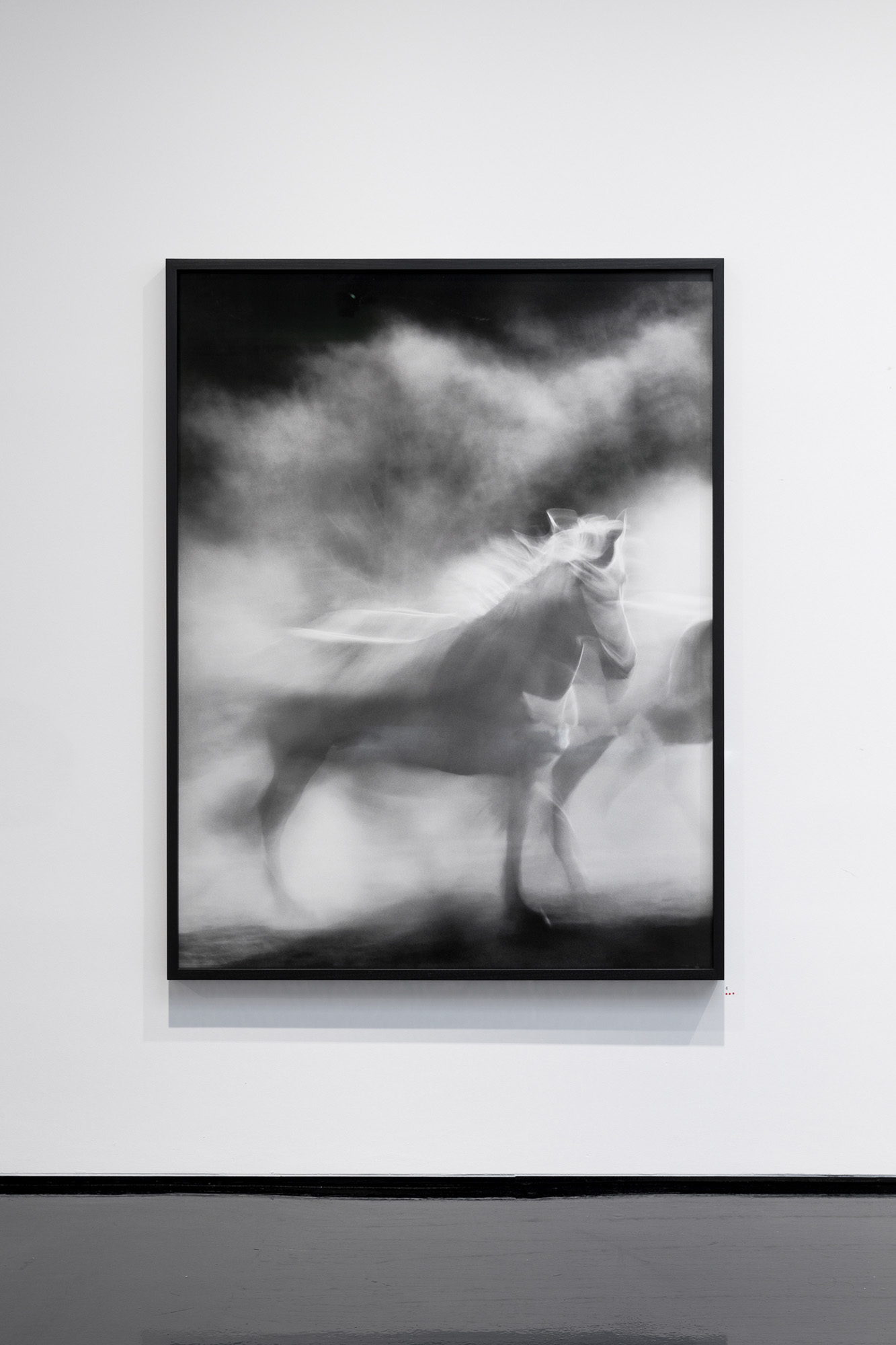
March
End of Violet
GALLERY 1
The title of my exhibition, End of Violet, is taken from a diary that Mary Somerville penned in 1845, detailing her experiments on the colour spectrum and vegetable juices. These words are not to be found in the body of the text, but instead are inscribed within the table of contents, a voice from the margin that sets a tone for what is to come. Violet is at the end of the colour spectrum, and therefore at the very edge of vision. In other words, Somerville’s experiments with colour photography strove to push the limits of what can be perceptually known.
Justine Varga, March 2023
